Haddonfield Blooming Outdoors, Year-Round
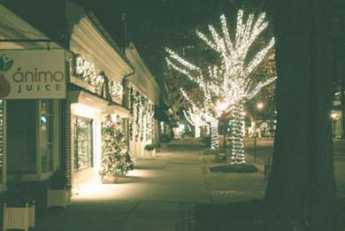
|
|
Haddonfield Christmas Lights
|
DECEMBER. The last of the outdoor blooms disappear at Thanksgiving. The last fall-blooming (Sasanqua) camellias, witch hazels and surviving rose bushes finish up, and the glorious maple trees have lost their fall foliage. In a warm year, the lawns remain green through Christmas, while the town lights up its trees and shrubs, and doorways, and lamp posts. The church carillon plays carols; it gets dark early. Old timers tell you of once riding to Moorestown for Christmas in a one-horse open sleigh. Winters are definitely getting warmer, but it's unclear whether this has to do with global warming or just hot water from a million drain-pipes warming up the rivers. The Philadelphia water department reports it extracts seven times as much water from the river as flows past from Torresdale to Marcus Hook. Each drop must go through seven sewage systems during that transit. Warmer weather or not, one gets to wishing the home oil delivery services would post their prices on big signs, the way gas stations do. Price controls are abhorrent, but sometimes the competitive marketplace could use a little help.
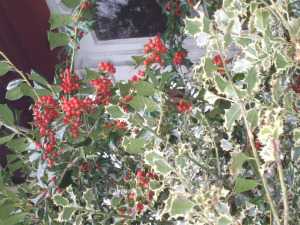
|
|
Holly Berries
|
JANUARY'S Ice and snow, as sung by Flanders and Swann, make the nose and fingers glow. There's not much blooming outdoors along the Atlantic coast north of Cape Hatteras in January, although the holly berries are still colorful, especially when surrounded by a thin dusting of snow. There is at least one Haddonfield family, the Coffins, who make a hobby of growing a wide variety of holly variants, many of them quite hard to grow. For some semblance of outdoor color in January, however, red berries on a tall bush show up best.
In my family, we also resort to Christmas cactus for flowers at this time of the year. It's a house plant, however, and it's a succulent, not a true cactus. In spite of the name, it only reliably blooms at Christmas if you force it to. Our formula is to stop watering it at Hallow E'en and resume watering at Thanksgiving, keeping the plant in semi-darkness during that period. Even so, it's more naturally a January bloomer, and among the easiest indoor plants to maintain. Our Christmas cactus plant is in its fourth generation within our family, with three living generations maintaining descendants of the original plant. Grandma's Christmas cactus is a living link within the family, helping us to remember who we are.
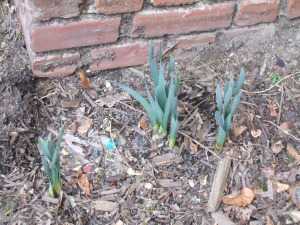
|
|
Early Sprouts
|
FEBRUARY'S slush and sleet, sing the Englishmen, freeze the toes right off your feet. Toward the end of the month in one of Haddonfield's milder winters, you can expect the snowdrops to flower around the base of dormant dogwood trees. These bulb plants are not very showy except for being the only thing in bloom, so plant a lot of them in clusters in the early fall, using loose soil so they can naturalize. Generally speaking, rabbits leave them alone, and in a week or so they are joined by Snowdrops, Glory of the Snow, and FSquill. The leaf fall from dogwood trees from is so dense you probably find bare ground around the base of the tree; needs something to brighten it up. The red holly berries are still on the bush; if you are lucky you have varieties of holly with white stripes on the leaves, although variegated plants are less hardy than the plain green ones. During a mild snap, daffodils poke up spikes of leaves, and a few of them have tinges of yellow. Haddonfield can get a ton of snow in February, but not every year. Some years are so mild they snatch away all the fun from neighbors who take cruises or go to southern climes for an unnatural suntan, but older residents can remember years when the Delaware River froze over. The early blooming magnolias are in bud, offering promise of what is to come. Almost everyone's lawn is a dormant brown.

|
|
Snowdrops
|
MARCH arrived like a lamb this year, not every year. After a late 5" snowfall melted, the snowdrops carpeted the beds under the dogwood trees. The snowdrop idea is spreading; several neighbors have clumps of them. Plant them in clusters, not strings; in loose soil, they naturalize freely. Daylight savings time arrived, making a lot of people late for church, but helping to give the feeling of spring, which isn't officially here until March 21. The daffodils are up, showing tips of yellow. Magnolias are in bud, the grass is brown, but peppered with shoots of Star of Bethlehem. The star plants are nice but thrive in muddy areas to the point they seem like weeds. As bulb plants, Star of Bethlehem come up in the spring looking like rich green early grass. Since no chemicals seem to affect them, the best you can do is mow the fresh-looking "grass" as early and as close as you can; it retards them, maybe making them die out. If you let them bloom and go to seed, you are lost. Star of Bethlehem dries up and dies on the first really warm day, leaving a bare patch in the lawn, which crabgrass is happy to fill up. March 12: Crocus, out of nowhere, blooming profusely before the daffodils make the leap. The first year you plant bulbs, they come up slowly; in years after that, they seem to jump out of the ground. Planting a few new ones every year is a way to extend the season. Sooner or later the crocus will die out; better to stick with snowdrops and squill, which will usually naturalize. By the end of March, the crocuses are fully out, the Glory of the Snow is truly glorious, the squill abundantly naturalizing in the lawn. are suddenly in full bloom because the buds are hidden under the leaves until the flowers push forward. Hellebore gets better every year, filling up shady places and somehow repellent to rodents and deer. The opposite is true of hyacinths, which get a great start but are quickly eaten by rabbits attracted by the nice odor. Forsythia are starting to blossom, sort of straggly if wild, but brilliant yellow if . Lots and lots of buds are appearing on the bushes.

|
|
Forsythia
|
April Fool's day really starts the main season for Haddonfield blooming. The most striking announcement that Haddonfield is ready to go comes from the magnolia trees, because they are thirty or forty feet high, completely covered with bloom. Depending on the rainfall, and whether you fertilized adequately, the lawns are now green. Most people start mowing their lawns a week or so too late, leaving the brown stubs of last year's grass showing, and allowing the confounded Star of Bethlehem to get a start. Back down at ground level, the clumps of Glory of the Snow and Squill make a very welcome show at this time of year, but the Snowdrops are pretty well over. If you are doing this sort of small-bulb edging, it's best to mix all three in the same bed to extend the small-bulb season. Flowering quince trees (or bushes, really) come out on April Fool's day, but they are easily nipped by a cold snap, and revived by warm weather. In some years when the temperature hovers around the freezing point, it is possible to have three different bloomings of flowering quince, extending over several weeks. The Hellebore stays in bloom for several weeks in April, although the foliage grows up and hides the blossoms. If you plant magic lily among the Hellebore, the leaf fronds will mix among them and then die down; the tall lily blossoms appear "like magic" in August. Daffodils are in abundance at this time, in case Wordsworth is watching, making a ground-level yellow display underneath the yellow forsythia, also in full bloom. Blooming at the same time are the mucronulatum azaleas, which are really rhodedendrons, showing a nice lavender color. Like the forsythia, the wild types are rather scrawny and sparse, while the hybrids have thickly blossomed with a brighter hue. Eat your heart out, neighbors; with these early bloomers we can have a showy spring display a month earlier, at a time when you are hungry for spring color. Notice there are four common plantings which are broad-leafed but retain their leaves all winter. Evergreens with needles, of course, but in addition the Korean dogwood is green all winter, the magnolias have shiny leaves year-round, and the scuba. Acuba are a very worthwhile addition to any garden, because they flourish in shade and sun, are simple to transplant just from sticking bare shoots in the ground, and quickly hide garbage cans, garage entrances, etc. They have a spectacular red berry hidden under the top leaves; trim them down six inches and you will see bright red berries from December to May. They aren't blossoms but are just as colorful. Some people plant crocus and hyacynths for this season, but my advice is they are just too attractive for rabbits when you can fill the same space with daffodils and Glory of the Snow. Tulips? Well, they have to be dug up every year and replanted, and then the dead blossoms have to be trimmed after they bloom; too much trouble for me. Lilacs? Well T.S. Eliot made them famous in the Waste Land but they require alkaline soil to thrive; Haddonfield soil is naturally too acid for lilacs unless you keep putting lime on them. If you come to Haddonfield and stay for years (why not?) you concentrate on things that are low-maintenance. People who move into town from Michigan are forever planting lilac, crocus, and tulips, but that's high-maintenance in Haddonfield.

|
|
Azalea
|
April 7: The parade of colors is beginning. Flowering fruit trees, flowering apple trees, cherries are in abundance throughout southern New Jersey. In center city Philadelphia, someone had the splendid idea of planting Ginkgo trees along the sidewalks. They look pretty much like flowering apple trees but require very little water so they become the urban favorite. When you plant flowering trees, it may take ten or more years before you see what the effect is, especially how the color fits in with the surroundings; and by then it is too late. Latecomers to the garden competition have a better chance to alternate a contrasting color. When there's nothing else in bloom, white is pretty spectacular. But when every tree is the same, it can be a little boring. For example, this is cherry blossom time in Japan, but the Japanese have so over-planted pink cherry trees for the season that although overwhelming at first, eventually the universal pinkness is pretty boring indeed. Meanwhile, all of the deciduous trees are starting to leaf out, but haven't reached the point of identifiable leaves. In many ways, this is the most beautiful brief season of the year, as every tree shows lacy tracery against the sky, but only for a few hours before the leaves appear.
April 16: The pachysandra ground cover is covered with clusters of little white flowers, which usually last for less than a week. It's hard to justify planting them for that, but important to remember an old maxim: That which grows on bare ground under a Norway maple is pachysandra -- maybe. For this purpose, Haddonfield used to have a great deal of Periwinkle, whose bright blue flowers seem somewhat more persistent because they do not all come into bloom at once. Periwinkle takes a fair amount of care, however, particularly to rake the Maple leaves away in the Fall without uprooting the ground cover, water in the summer, fertilize in the Fall; so it's falling off in popularity. If you like little blue flowers that are easier to manage, try Forget-me-nots, which come into bloom at the end of April and persist for a couple of weeks. This the magic time in South Jersey, where all the trees seem lacy with early leaf, and the laziness is echoed by Japanese cherry trees, star magnolia, and forsythia; it's a pity this wonderful moment only lasts a few days. The grass is generally green, but still growing slowly.

|
|
Pink Dogwood
|
MAY is heavenly in Haddonfield. Three main acid-loving plants dominate the scene: azalea, dogwood
Little blue blossoms as a ground cover are another garden feature which can give the appearance of an extended season. The glory of the Snow is planted as bulbs in the fall, coming up just as the snowdrops fade away. And then the little blue flowers of periwinkle take over as a ground cover when the forsythia is out, followed by Forget-Me-Nots during the azalea season. Grape hyacinth fit in here, too. Bulbs, ground covers, and perennials are very different sorts of plants, but the low-growing little blue flowers are much the same at a distance and can give the appearance of almost two months of continuous garden effect. Along with lily of the valley, which has a sweet fragrance, it is possible to replace the bare-earth appearance of a landscaper's commercial flowerbed with a display that is fun to watch in its subtle variations -- almost all spring long. Don't forget a patch of Woodruff, which makes a nice ground cover like pachysandra, with the bonus that a few blossoms floating in a bottle of cheap white wine convert it into delightful May Wine, Haddonfield style.
If you drive around Haddonfield in the spring, you can come across occasional homeowners who have gone too far with azaleas. They probably didn't realize what they were doing when they installed far too many azaleas of different color and habit as small plantings. But after twenty years, these bushes will grow pretty big and shaggy, looking especially overdone when one house is like this, but all the neighbors have nothing but green yards. This problem can be addressed by removing a few of the biggest bushes, and less appropriately, by trimming them like hedges. Overdone gardens like this need to be pruned, and rather severely. The best time to do it is just after the blooming has stopped, which is also the time when the recollection of kitchiness is most acute. These people mean well, so be kind to them.
May 15. The trees are almost completely leafed out, and the grass is lush green. It's easy to be fooled by the grass, which can contain a lot of annual bluegrass and clipped-off Star of Bethlehem which will die off on the first really warm day, usually in June, leaving bare spots. What you need is perennial bluegrass, preferably of several varieties to resist diseases. Matching the full leaf-out of the trees are the hybrid rhododendrons, which are essentially the same as azaleas but taller and somewhat showier. They are less hardy than other rhododendrons; sometimes six or seven of them will be killed by a sudden cold snap, ruining your garden effect; so don't depend on them exclusively. Wegelia is out now, with nice effect, too.
Memorial Day used to be the last day of May, but to create three-day weekends, it now varies in timing by several days. In some regions, it's traditional to look for peonies, all crawling with ants, on Memorial Day, but in Haddonfield, it's the time for Mountain Laurel to be in full bloom. It takes ten to fifty years to produce an effective laurel bush out of a puny little potted plant, but when you do grow one, it makes a pretty spectacular Memorial Day. Laurel is the state flower of New Jersey and Pennsylvania, but it seems less popular as a garden plant than it once was. There's also the mean rumor that honey from laurel blossoms is poisonous, but it's hard to get scientific verification of that. So many wildflowers are in bloom in late Spring, it seems relevant that the documented episodes of poisoning mostly date from the Civil War when both Northern and Southern armies were foraging in the North and South Carolina mountain wilderness. Belladonna would easily explain the symptoms the soldiers reported. There's still a Memorial Day parade in Haddonfield on Memorial Day, now much smaller than the one on the Fourth of July, although fifty years ago it was the other way around. Very likely, the Civil War veterans died off and World War I veterans favored Armistice Day. The American Legion, now mostly World War II veterans, has taken up Memorial Day, while the Veterans of Foreign Wars (originally Spanish American War, now Vietnam veterans) seem to like Independence Day. It does seem we have too many wars because it's possible to think of several others that haven't even adopted a parade.
JUNE in Haddonfield is usually a month with two seasons, late spring and early summer. At the start of the month, the left-overs from late May are still blooming, but winding down. The Mountain Laurel and hybrid rhododendrons start the month in full bloom, and then gradually fade out by about the tenth of June. Sweet magnolias come out then, with rather amazingly big flower buds. There are Easter lilies, and roses in great abundance. Astilbe in several colors is at the base of the larger bushes, and the lawns are still richly green, even bluish tinted. There are bunnies running around aimlessly, and squirrels seriously pursuing their tasks; comparatively few birds are on the ground, but up in the trees there is a great abundance of songbirds, especially early in the morning. They better watch out, a neighbor reports nesting hawks, and those owls are somewhere around.
June 15. The early June blooms are fading, but some straggler azaleas and hybrid rhododendrons persist, especially in shady areas. But the middle of June is the time for the hydrangea to pop out, and if you have taken care, there will be several interesting varieties in several colors. The Korean dogwood is just starting to blossom, about the time you gave up and assumed they never would. The blossoms (corms) start out tinted green and then turn white as they grow in size, and for some reasons, the tree will blossom in some areas well before others. This tree looks deciduous, but in Haddonfield at least the leaves remain green on the trees all winter long. And now, the wild rhododendron starts to blossom, continuing up to about the Fourth of July. These bushes are big, and they bloom abundantly, but the blossoms tend to be deep within the foliage, bloom sequentially instead of all at once, and are thus much less showy than the hybrids. But if they have been planted near the outside of a window, the blossoms are quite nice when viewed from inside the house. Sort of house plants, growing outside. Be aware of a sudden burst of hot weather. The Star of Bethlehem will suddenly grow brown, and the annual bluegrass will die as well. his is the moment in the season when a good lawn suddenly looks second-rate, but a really really good lawn just shows 'em all up. Merion bluegrass; there's nothing like it.

|
|
Independence Day
|
JULY'S first week revolves around the celebration of Independence Day, and in Haddonfield that means the Parade. Since the Declaration was ratified and the State of New Jersey was then immediately founded in the Indian King Tavern, the excitement is natural enough. There are fireworks and antique cars, string bands and bagpipers, service clubs and neighborhood displays, but any old-timer will tell you the central excitement of the parade and the memories generated, focus on the little kids with decorated bicycles. As far as flowers are concerned, the main display is the wild rhododendrons, with daylilies starting up, and hydrangea of many colors. There are a few Southern Magnolias, especially one in front of the Episcopal Church, with flowers as big as dinner plates, but most of these flowering trees have been planted fairly recently so the blooms are sparse. Give them a few good growing seasons before they make an impact on the town. By mid-July, most of the color is coming from window boxes and perennials along the borders of the lawns. Here's one thought about nature in the summer: Although the dominant front-yard color in Haddonfield in July and August is green (the flowering annuals and perennials are mostly in the back yards), there is the question of insects and birds. The buddleia plant attracts butterflies and hummingbirds, honeybees are attracted by the flowers of Hosta, and phlox attracts lots of bumblebees. We're in the migratory path for birds, so there are spring and fall migrants; nesting birds predominate in hot weather, so that's what should be attracted to bird feeders with sunflower seeds. It isn't unusual for a house to have eight or ten bird feeders, where the main problem is squirrels, lots and lots of squirrels. Chipmunks and squirrels are fun to watch, just like hummingbirds and bumblebees, but you should give some thought to what kind of ecosystem you hope to promote.
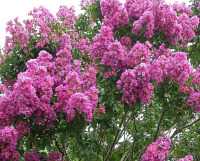
|
|
Crape Myrtle
|
AUGUST in Haddonfield features Crape Myrtle, which comes in many shades of red, and many sizes from three-foot bushes to thirty-foot trees. They are a southern flowering bush, just barely hardy this far North, so it pays to shelter them a little when you plant them. For the most part, blooming flowers in Haddonfield are mostly found in the back yards during August. The annuals are too numerous to mention, so an experienced gardener groups color schemes. Another trick is to plant seven-foot sunflowers in the back, five-foot gladioli in front of them, and three-foot phlox in front of that. Let's not forget to mention crabgrass. When the ground is wet they are relatively easy to pull up, when they get to be twelve-inch mounds they are almost impossible to pull. Newcomers are pleased crabgrass is such a quick-growing thick green turf, but they are the enemy and don't you forget it. They are an annual, so the first frost turns them brown, and they seed themselves relentlessly. Part of enjoying a garden is learning to enjoy pulling up crabgrass.
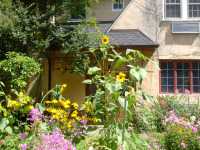
|
|
sunflowers
|
SEPTEMBER, remember, as the mariners say about hurricanes. Somewhere it is written that 80% of the rainfall along the Atlantic coast in the autumn is caused by coastal storms, sometimes hurricanes, sometimes nor'easters, sometimes just storms. Variability of the rainfall in autumn is one of the main causes of variability in spring gardens. Since September is the perfect time to put in new grass seed, the quality of lawns has a lot to do with coastal storms the year before. It's almost three months since the days started getting shorter on June 21, so the flowering plants are starting to fade. Crape myrtle is good for the first two weeks, and spider plant gets three or four feet tall, an annual that looks like a flowering bush. The August blooms, of sunflowers and phlox, are starting to droop a little. It's definitely time to go to the local plant store and get a dozen or so chrysanthemum plants. Yes, it's possible to debut them in the summer, prune them into tight bushes, and have a perennial that comes back every year. But you have to be a slave to chrysanthemums all spring and summer in order to have anything as full and compact as you can buy at the store. There are lots of 'mums in Haddonfield all fall, but almost all of them are purchased in pots in September.
September is the critical moment for good lawns. Permanent lawns go dormant around the end of August, and even the best of them look a little shaggy then. The most neglected lawns die at this time, for lack of water, fertilizer, excess heat, and so on. However, permanent lawns with lots of bluegrass will respond to this weather signal by thickening up, one shoot dividing into three or four, and after a week or ten days will produce the best lawn of the year. Now is the time to fertilize, now is the time to reseed bare patches; every few years it may be time to thatch and thin out, although the lawn will look terrible for a month after hatching. If you seed, mainly use bluegrass plus a little fescue for shady areas. When reading the box of seed, just ignore the ryegrass, even if it says "permanent" ryegrass. Treat ryegrass as just so much sand diluting the good grasses; only use it if you are planning a quick sale of your house and want it to look nice for a few months. The secret of a good lawn is fertilizer, but of course, you can't grow wheat if you plant corn, you must give it some good seed worth fertilizing.

|
|
Fall Leaves
|
OCTOBER, according to the New England college drinking songs, is when the leaves do fall, so early in October. However, those who prefer the advantages of living in Haddonfield have the additional advantage of finding that in Haddonfield, the leaves turn brilliant and start to fall, so late in October. The rest of the color in October is left-over from the September fall revival. Lots of colored leaves lead to lots of leaves on the ground to rake. And you better rake them off the lawn, too, or else they will rot and kill the grass, leading to bare ground, which washes away from the tree roots and looks just terrible. So rake, and rake cheerfully. Blessings on the Borough, which sends trucks around to suck them up into trucks and takes them away, so they don't clog up the storm sewers with disheartening floods in the streets when it rains, as it frequently does when fall hurricanes sent storms up our way. Remember, do your share of leaf raking, and do it both quickly and cheerfully.

|
|
Chrysanthemum
|
NOVEMBER has some late-blooming flowers, especially chrysanthemums and others of what Linnaeus called the Aster family, but which DNA studies show are just late-blooming flowers that sort of look like chrysanthemums. We're not going to get into this argument since the use of DNA typing seems to lead to placing the typical florist's chrysanthemum outside the chrysanthemum family, and endless other confusion which would serve this website no particular good until it settles down in forty or fifty years. A few stragglers like the spider plant will continue to bloom into November unless there's an early frost, along with "Asters" and dahlias, but all of that is a lot of trouble for a suburban landscape after school has begun, and the leaves are piling up, taking time to rake during short daylight hours. Be content with the glorious colors of the many maple trees, especially those lining the long straight streets like golden arches. We don't have much red color in the maples, such as you see in Vermont, so it's a good idea to plant some Euonymus bushes which will soon grow into trees and have stunning scarlet leaves in early November. The one really good fall-blooming shrub is the fall Carmelia, which comes in a variety of colors, but the white shows up best in my opinion. Camellias, whether of the fall-blooming or Japonica variety, are truly best suited to more southern climates. However, if you can find a place that is both sunny and protected -- a difficult combination to find -- they can grow to a height of six or eight feet, covered with blossoms at a time when foundation shrubbery is ordinarily pretty drab. After ten or fifteen years you can expect an early frost finally to get them, so don't be disheartened if that happens, just start over. If you have the sort of employer who transfers people every two years, just stick with pots of florists' chrysanthemums.

|
|
The glory of the Snow
|

|
|
Spring Budding
|

|
|
Spring Budding
|

|
|
Daffodils
|

|
|
Crocus
|

|
|
Japanese Cherry
|

|
|
Grape Hyacinth
|

|
|
Narcissus
|
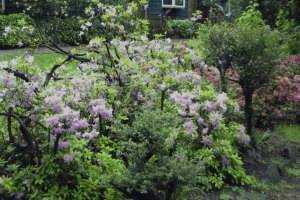
|
|
Azalea
|

|
|
Wisteria
|

|
|
Lily of Valley
|

|
|
Magnolia
|

|
|
Money Bush
|

|
|
Forget Me Nots
|

|
|
Tezou
|
Originally published: Wednesday, December 03, 2008; most-recently modified: Tuesday, May 21, 2019
| Posted by: how to get twitter followers free | Feb 13, 2012 9:50 AM |
| Posted by: cheapoair promo code | Feb 13, 2012 9:28 AM |
| Posted by: esalerugs promo code | Feb 13, 2012 9:07 AM |
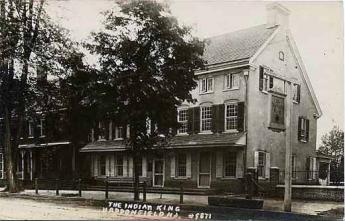 Haddonfield is a bit of a secret. It's Philadelphia's "Main Line, East"
Haddonfield is a bit of a secret. It's Philadelphia's "Main Line, East"


























